Become a Patron!
True Information is the most valuable resource and we ask you to give back.
The following is a listing of incidents in which American citizens were killed in attacks worldwide carried out by Islamic terrorists. The exact number of American casualties is difficult to calculate because of incomplete or inaccurate news reports regarding numbers and nationalities of those killed or injured.
Approximately 4,000 Americans have been killed in terrorist attacks since 1970, including the atrocities of September 11, 2001. Since Yasser Arafat signed the Oslo Peace Accords in September 1993, at least 54 Americans have been murdered by Palestinian terrorism. The list does not include American servicemembers killed on active duty.
Attacks Listed in Chronological order:
Date
Location
Victims/Incident
February 23, 1970
Halhoul, West Bank
Palestinian Liberation Organization terrorists open fire on a busload of pilgrims killing Barbara Ertle of Michigan and wounding two other Americans.
March 28-29, 1970
Beirut, Lebanon
The Popular Front for the Liberation of Palestine (PFLP) fired seven rockets at the U.S. Embassy, the American Insurance Company, Bank of America and the John F. Kennedy library.
September 14, 1970
Amman, Jordan
The PFLP hijacked a TWA flight from Zurich, Switzerland and forced it to land in Amman. Four American citizens were injured.
May 30, 1972
Ben Gurion Airport, Israel
Three members of the Japanese Red Army, acting on the PFLP’s bbehalf, carried out a machine-gun and grenade attack at Israel’s main airport, killing 26 and wounding 78 people. Many of the casualties were American citizens, mostly from Puerto Rico.
September 5, 1972
Munich, Germany
,During the Olympic Games in Munich, Black September, a front for Fatah, took hostage 11 members of the Israeli Olympic team. Nine athletes were killed including weightlifter David Berger, an American-Israeli from Cleveland, Ohio.
March 2, 1973
Khartoum, Sudan
Cleo A. Noel, Jr., U.S. ambassador to Sudan, and George C. Moore, also a U.S. diplomat, were held hostage and then killed by terrorists at the U.S. Embassy in Khartoum. It seems likely that Fatah was responsible for the attack.
September 8, 1974
Athens, Greece
TWA Flight 841, flying from Tel Aviv to New York, made a scheduled stop in Athens. Shortly after takeoff, it crashed into the Ionian Sea and all 88 passengers were killed, including 32-year-old Steven R. Lowe, husband Jeremiah Michel and wife, Kathrine Hadley Michel of Poughkeepsie, NY, Frederick and Margaret Hare of Bernardsville, NJ, Ralph H. Bosh of Madison, CT, Seldon and Etan Bard of Tuckahoe, NY, Dr. and Mrs. Frederick Stohlman of Newton, MA, Don H. Holiday of Mahwah, NJ, and Jon L. Chesire of Old Lyme, Ct; all of which were Almerican citizens. An investigation of the crash conclusively established that it was caused by explosives set in the rear cargo department of the plane.
June 29, 1975
Beirut, Lebanon
The PFLP kidnapped the U.S. military attaché to Lebanon, Ernest Morgan, and demanded food, clothing and building materials for indigent residents living near Beirut harbor. The American diplomat was released after an anonymous benefactor provided food to the neighborhood.
November 14, 1975
Jerusalem, Israel
Lola Nunberg, 53, of New York, was injured during a bombing attack in downtown Jerusalem. Fatah claimed responsibility for the bombing, which killed six people and wounded 38.
November 21, 1975
Ramat Hamagshimim, Israel
Michael Nadler, an American-Israeli from Miami Beach, Florida, was killed when axe-wielding terrorists from the Democrat Front for the Liberation of Palestine, a PLO faction, attacked students in the Golan Heights.
August 11, 1976
Istanbul, Turkey
The PFLP launched an attack on the terminal of Israel’s major airline, El Al, at the Istanbul airport. Four civilians, including Harold Rosenthal of Philadelphia, Pennsylvania, were killed and 20 injured.
January 1, 1977
Beirut, Lebanon
Frances E. Meloy, U.S. ambassador to Lebanon, and Robert O.Waring, the U.S. economic counselor, were kidnapped by PFLP members as they crossed a militia checkpoint separating the Christian from the Muslim parts of Beirut. They were later shot to death.
March 11, 1978
Tel Aviv, Israel
Gail Rubin, niece of U.S. Senator Abraham Ribicoff, was among 38 people shot to death by PLO terrorists on an Israeli beach.
June 2, 1978
Jerusalem, Israel
Richard Fishman, a medical student from Maryland, was among six killed in a PLO bus bombing in Jerusalem. Chava Sprecher, another American citizen from Seattle, Washington, was injured.
May 4, 1979
Tiberias, Israel
Haim Mark and his wife, Haya, of New Haven, Connecticut were injured in a PLO bombing attack in northern Israel.
November 4, 1979
Tehran, Iran
After President Carter agreed to admit the Shah of Iran into the U.S., Iranian radicals seized the U.S. Embassy in Tehran and took 66 American diplomats hostage. Thirteen hostages were soon freed, but the remaining 53 were held until their release on January 20, 1981.
May 2, 1980
Hebron, West Bank
Eli Haze’ev, an American-Israeli from Alexandria, Virginia, was killed in a PLO attack on Jewish worshippers walking home from a synagogue in Hebron.
July 19, 1982
Beirut, Lebanon
Hizballah members kidnapped David Dodge, acting president of the American University in Beirut. After a year in captivity, Dodge was released. Rifat Assad, head of Syrian Intelligence, helped in the negotiation with the terrorists.
August 19, 1982
Paris, France
Two American citizens, Anne Van Zanten and Grace Cutler, were killed when the PLO bombed a Jewish restaurant in Paris.
March 16, 1983
Beirut, Lebanon
Five American Marines were wounded in a hand grenade attack while on patrol north of Beirut International Airport. The Islamic Jihad and Al-Amal, a Shi’ite militia, claimed responsibility for the attack
April 18, 1983
Beirut, Lebanon
A truck-bomb detonated by a remote control exploded in front of the U.S. Embassy in Beirut, killing 63 employees, including the CIA’s Middle East director, and wounding 120. Hizballah, with financial backing from Iran, was responsible for the attack.
July 1, 1983
Hebron, West Bank
Aharon Gross, 19, an American-Israeli from New York, was stabbed to death by PLO terrorists in the Hebron marketplace.
September 29, 1983
Beirut, Lebanon
Two American marines were kidnapped by Amal members. They were released after intervention by a Lebanese army officer.
October 23, 1983
Beirut, Lebanon
A truck loaded with a bomb crashed into the lobby of the U.S. Marines headquarters in Beirut, killing 241 soldiers and wounding 81. The attack was carried out by Hizballah with the help of Syrian intelligence and financed by Iran.
December 19, 1983
Jerusalem, Israel
Serena Sussman, a 60-year-old tourist from Anderson, South Carolina, died from injuries from the PLO bombing of a bus in Jerusalem 13 days earlier.
January 18, 1984
Beirut, Lebanon
Malcolm Kerr, a Lebanese born American who was president of the American University of Beirut, was killed by two gunmen outside his office. Hizballah said the assassination was part of the organization’s plan to “drive all Americans out from Lebanon.”
March 7, 1984
Beirut, Lebanon
Hizballah members kidnapped Jeremy Levin, Beirut bureau chief of Cable News Network (CNN). Levin managed to escape and reach Syrian army barracks. He was later transferred to American hands.
March 8, 1984
Beirut, Lebanon
Three Hizballah members kidnapped Reverend Benjamin T. Weir, while he was walking with his wife in Beirut’s Manara neighborhood. Weir was released after 16 months of captivity with Syrian and Iranian assistance.
March 16, 1984
Beirut, Lebanon
Hizballah kidnapped William Buckley, a political officer at the U.S. Embassy in Beirut. Buckley was supposed to be exchanged for prisoners. However when the transaction failed to take place, he was reportedly transported to Iran. Although his body was never found, the U.S. administration declared the American diplomat dead.
April 12, 1984
Torrejon, Spain
Hizballah bombed a restaurant near an U.S. Air Force base in Torrejon, Spain, wounding 83 people.
September 20, 1984
Beirut, Lebanon
A suicide bomb attack on the U.S. Embassy in East Beirut killed 23 people and injured 21. The American and British ambassadors were slightly injured in the attack, attributed to the Iranian backed Hizballah group.
September 20, 1984
Aukar, Lebanon
Islamic Jihad detonate a van full of explosives 30 feet in front of the U.S. Embassy annex severely damaging the building, killing two U.S. servicemen and seven Lebanese employees, as well as 5 to 15 non-employees. Twenty Americans were injured, including U.S. Ambassador Reginald Bartholomew and visiting British Ambassador David Miers. An estimated 40 to 50 Lebanese were hurt. The attack came in response to the U.S. veto September 6 of a U.N. Security Council resolution.
December 4, 1984
Tehran, Iran
Hizballah terrorists hijacked a Kuwait Airlines plane en route from Dubai, United Emirates, to Karachi, Pakistan. They demanded the release from Kuwaiti jails of members of Da’Wa, a group of Shiite extremists serving sentences for attacks on French and American targets on Kuwaiti territory. The terrorists forced the pilot to fly to Tehran where the terrorists murdered two passengers–American Agency for International Development employees, Charles Hegna and William Stanford. Although an Iranian special unit ended the incident by storming the plane and arresting the terrorists, the Iranian government might also have been involved in the hijacking.
June 14, 1985
Between Athens and Rome
Two Hizballah members hijacked a TWA flight en route to Rome from Athens and forced the pilot to fly to Beirut. The terrorists, believed to belong to Hizballah, asked for the release of members of the group Kuwait 17 and 700 Shi’ite prisoners held in Israeli and South Lebanese prisons. The eight crewmembers and 145 passengers were held for 17 days during which one of the hostages, Robert Stethem, a U.S. Navy diver, was murdered. After being flown twice to Algiers, the aircraft returned to Beirut and the hostages were released. Later on, four Hizballah members were secretly indicted. One of them, the Hizballah senior officer Imad Mughniyah, was indicted in absentia.
October 7, 1985
Between Alexandria, Egypt and Haifa, Israel
A four-member PFLP squad took over the Italian cruise ship Achille Lauro, as it was sailing from Alexandria, Egypt, to Israel. The squad murdered a disabled U.S. citizen, Leon Klinghoffer, by throwing him in the ocean. The rest of the passengers were held hostage for two days and later released after the terrorists turned themselves in to Egyptian authorities in return for safe passage. But U.S. Navy fighters intercepted the Egyptian aircraft flying the terrorists to Tunis and forced it to land at the NATO airbase in Italy, where the terrorists were arrested. Two of the terrorists were tried in Italy and sentenced to prison. The Italian authorities however let the two others escape on diplomatic passports. Abu Abbas, who masterminded the hijacking, was later convicted to life imprisonment in absentia.
December 27, 1985
Rome, Italy
Four terrorists from Abu Nidal’s organization attacked El Al offices at the Leonardo di Vinci Airport in Rome. Thirteen people, including five Americans, were killed and 74 wounded, among them two Americans. The terrorists had come from Damascus and were supported by the Syrian regime.
March 30, 1986
Athens, Greece
A bomb exploded on a TWA flight from Rome as it approached Athens airport. The attack killed four U.S. citizens who were sucked through a hole made by the blast, although the plane safely landed. The bombing was attributed to the Fatah Special Operations Group’s intelligence and security apparatus, headed by Abdullah Abd al-Hamid Labib, alias Colonel Hawari.
April 5, 1986
West Berlin, Germany
An explosion at the “La Belle” nightclub in Berlin, frequented by American soldiers, killed three–2 U.S. soldiers and a Turkish woman-and wounded 191 including 41 U.S. soldiers. Given evidence of Libyan involvement, the U.S. Air Force made a retaliatory attack against Libyan targets on April 17. Libya refused to hand over to Germany five suspects believed to be there. Others, however, were tried including Yassir Shraidi and Musbah Eter, arrested in Rome in August 1997 and extradited; and also Ali Chanaa, his wife, Verena Chanaa, and her sister, Andrea Haeusler. Shraidi, accused of masterminding the attack, was sentenced to 14 years in jail. The Libyan diplomat Musbah Eter and Ali Chanaa were both sentenced to 12 years in jail. Verena Chanaa was sentenced to 14 years in prison. Andrea Haeusler was acquitted.
September 5, 1986
Karachi, Pakistan
Abu Nidal members hijacked a Pan Am flight leaving Karachi, Pakistan bound for Frankfurt, Germany and New York with 379 passengers, including 89 Americans. The terrorists forced the plane to land in Larnaca, Cyprus, where they demanded the release of two Palestinians and a Briton jailed for the murder of three Israelis there in 1985. The terrorists killed 22 of the passengers, including two American citizens and wounded many others. They were caught and indicted by a Washington grand jury in 1991.
September 9, 1986
Beirut, Lebanon
Continuing its anti-American attacks, Hizballah kidnapped Frank Reed, director of the American University in Beirut, whom they accused of being “a CIA agent.” He was released 44 months later. September 12, 1986, Beirut, Lebanon. Hizballah kidnapped Joseph Cicippio, the acting comptroller at the American University in Beirut. Cicippio was released five years later on December 1991.
October 15, 1986
Jerusalem, Israel
Gali Klein, an American citizen, was killed in a grenade attack by Fatah at the Western Wall in Jerusalem.
October 21, 1986
Beirut, Lebanon
Hizballah kidnapped Edward A. Tracy, an American citizen in Beirut. He was released five years later, on August 1991.
February 17, 1988
Ras-Al-Ein Tyre, Lebanon
Col. William Higgins, the American chief of the United Nations Truce Supervisory Organization, was abducted by Hizballah while driving from Tyre to Nakura. The hostages demanded the withdrawal of Israeli forces from Lebanon and the release of all Palestinian and Lebanese held prisoners in Israel. The U.S. government refused to answer the request. Hizballah later claimed they killed Higgins.
December 21, 1988
Lockerbie, Scotland
Pan Am Flight 103 departing from Frankfurt to New York was blown up in midair, killing all 259 passengers and another 11 people on the ground in Scotland. Two Libyan agents were found responsible for planting a sophisticated suitcase bomb onboard the plane. On 14 November 1991, arrest warrants were issued for Al-Amin Khalifa Fahima and Abdel Baset Ali Mohamed al-Megrahi. After Libya refused to extradite the suspects to stand trial, the United Nations leveled sanctions against the country in April 1992, including the freezing of Libyan assets abroad. In 1999, Libyan leader Muammar Gadhafi agreed to hand over the two suspects, but only if their trial was held in a neutral country and presided over by a Scottish judge. With the help of Saudi Arabia’s King Fahd and Crown Prince Abdullah, Al-Megrahi and Fahima were finally extradited and tried in Camp Zeist in the Netherlands. Megrahi was found guilty and jailed for life, while Fahima was acquitted due to a “lack of evidence” of his involvement. After the extradition, UN sanctions against Libya were automatically lifted.
January 27, 1989
Istanbul and Ankara, Turkey
Three simultaneous bombings were carried out against U.S. business targets–the Turkish American Businessmen Association and the Economic Development Foundation in Istanbul, and the Metal Employees Union in Ankara. The Dev Sol (Revolutionary Left) was held responsible for the attacks.
March 6, 1989
Cairo, Egypt
Two explosive devices were safely removed from the grounds of the American and British Cultural centers in Cairo. Three organizations were believed to be responsible for the attack: The January 15 organization, which had sent a letter bomb to the Israeli ambassador to London in January; the Egyptian Revolutionary Organization that from out 1984-1986 carried out attacks against U.S. and Israeli targets; and the Nasserite Organization, which had attacked British and American targets in 1988.
June 12, 1989
Bosphorus Straits, Turkey
A bomb exploded aboard an unoccupied boat used by U.S. consular staff. The explosion caused extensive damage but no casualties. An organization previously unknown, the Warriors of the June 16th Movement, claimed responsibility for the attack.
July 6, 1989
Between Tel Aviv and Jerusalem, Israel
A member of Palestinian Islamic Jihad seized control of the steering wheel of a crowded bus enroute from Tel Aviv to Jerusalem and drove the bus off a cliff in the area of Kiryat Ye’arim. 16 civilians were killed, including two Canadians and one American.
October 11, 1989
Izmir, Turkey
An explosive charge went off outside a U.S. military PX. Dev Sol was held responsible for the attack.
February 7, 1991
Incirlik Air Base, Turkey
Dev Sol members shot and killed a U.S. civilian contractor as he was getting into his car at the Incirlik Air Base in Adana, Turkey.
February 28, 1991
Izmir, Turkey
Two Dev Sol gunmen shot and wounded a U.S. Air Force officer as he entered his residence in Izmir.
October 28, 1991
Ankara, Turkey
Victor Marwick, an American soldier serving at the Turkish-American base, Tuslog, was killed and his wife wounded in a car bomb attack. The Turkish Islamic Jihad claimed responsibility for the attack.
October 28, 1991
Istanbul, Turkey
Two car bombings killed a U.S. Air Force sergeant and severely wounded an Egyptian diplomat in Istanbul. Turkish Islamic Jihad claimed responsibility.
November 8, 1991
Beirut, Lebanon
A 100-kg car bomb destroyed the administration building of the American University in Beirut, killing one person and wounding at least a dozen.
January 25, 1993
Virginia, USA
A Pakistani gunman opened fire on Central Intelligence Agency (CIA) employees standing outside of the building. Two agents, Frank Darling and Bennett Lansing, were killed and three others wounded. The assailant was never caught and reportedly fled to Pakistan.
February 26, 1993
Cairo, Egypt
A bomb exploded inside a café in downtown Cairo killing three. Among the 18 wounded were two U.S. citizens. No one claimed responsibility for the attack.
February 26, 1993
New York, USA
A massive van bomb exploded in an underground parking garage below the World Trade Center in New York City, killing six and wounding 1,042. Four Islamist activists were responsible for the attack. Ramzi Ahmed Yousef, the operation’s alleged mastermind, escaped but was later arrested in Pakistan and extradited to the United States. Abd al-Hakim Murad, another suspected conspirator, was arrested by local authorities in the Philippines and handed over to the United States. The two, along with two other terrorists, were tried in the U.S. and sentenced to 240 years.
July 5, 1993
Southeast Turkey
In eight separate incidents, the Kurdistan Workers’ Party (PKK) kidnapped a total of 19 Western tourists traveling in southeastern Turkey. The hostages, including U.S. citizen Colin Patrick Starger, were released unharmed after spending several weeks in captivity.
December 1, 1993
Jerusalem, Israel
Yitzhak Weinstock, 19, whose family came from Los Angeles, CA, was killed in a drive-by shooting. Hamas took responsibility for the attack
October 9, 1994
Ramallah, West Bank
Nachshon Wachsman, 19, whose family came from New York, was kidnapped and then murdered by Hamas.
October 9, 1994
Jerusalem, Israel
Shooting attack on cafe-goers in Jerusalem. U.S. citizens Scot Doberstein and Eric Goldberg were injured.
March 8, 1995
Karachi, Pakistan
Two unidentified gunmen armed with AK-47 assault rifles opened fire on a U.S. Consulate van in Karachi, killing two U.S. diplomats, Jacqueline Keys Van Landingham and Gary C. Durell, and wounding a third, Mark McCloy.
April 9, 1995
Kfar Darom and Netzarim, Gaza Strip
Two suicide attacks were carried out within a few hours of each other in Jewish settlements in the Gaza Strip. In the first attack a suicide bomber crashed an explosive-rigged van into an Israeli bus in Netzarim, killing eight including U.S. citizen Alisa Flatow, 20, of West Orange, NJ. More than 30 others were injured. In the second attack, a suicide bomber detonated a car bomb in the midst of a convoy of cars in Kfar Darom, injuring 12. The Palestine Islamic Jihad (PIJ) Shaqaqi Faction claimed responsibility for the attacks. U.S. citizens Chava Levine and Seth Klein were injured.
June 15, 1995
Jerusalem, Israel
U.S. citizen Howard Tavens of Cleveland, OH was injured in a stabbing attack.
July 4, 1995
Kashmir, India
In Kashmir, a previously unknown militant group, Al-Faran, with suspected links to a Kashmiri separatist group in Pakistan, took hostage six tourists, including two U.S. citizens. They demanded the release of Muslim militants held in Indian prisons. One of the U.S. citizens escaped on July 8, while on August 13 the decapitated body of the Norwegian hostage was found along with a note stating that the other hostages also would be killed if the group’s demands were not met. The Indian Government refused. Both Indian and American authorities believe the rest of the hostages were most likely killed in 1996 by their jailers.
August 1995,
Istanbul, Turkey
A bombing of Istanbul’s popular Taksim Square injured two U.S. citizens. This attack was part of a three-year-old attempt by the PKK to drive foreign tourists away from Turkey by striking at tourist sites.
August 21, 1995
Jerusalem, Israel
A bus bombing in Jerusalem by the Islamic Resistance Movement (Hamas) killed four, including American Joan Davenny of New Haven, CT, and wounded more than 100. U.S. citizens injured: Chanoch Bleier, Judith Shulewitz, Bernard Batta.
September 9, 1995
Ma’ale Michmash, Israel
American killed: Unborn child of Mrs. Mara Frey of Chicago. Mara Frey was injured.
November 9, 1995
Algiers, Algeria
Islamic extremists set fire to a warehouse belonging to the U.S. Embassy, threatened the Algerian security guard because he was working for the United States, and demanded to know whether any U.S. citizens were present. The Armed Islamic Group (GIA) probably carried out the attacks. The group had threatened to strike other foreign targets and especially U.S. objectives in Algeria, and the attack’s style was similar to past GIA operations against foreign facilities.
November 13, 1995
Riyadh, Saudi Arabia
A car bomb exploded in the parking lot outside of the Riyadh headquarters of the Office of the Program Manager/Saudi Arabian National Guard, killing seven persons, five of them U.S. citizens, and wounding 42. The blast severely damaged the three-story building, which houses a U.S. military advisory group, and several neighboring office buildings. Three groups — the Islamic Movement for Change, the Tigers of the Gulf, and the Combatant Partisans of God — claimed responsibility for the attack.
February 25, 1996
Jerusalem, Israel
A suicide bomber blew up a commuter bus in Jerusalem, killing 26, including three U.S. citizens, and injuring 80 others, among them three other U.S. citizens. Hamas claimed responsibility for the bombing. U. S. citizens killed: Sara Duker, of Teaneck, NJ, Matthew Eisenfeld of West Hartford, CT, Ira Weinstein of Bronx, NY. U.S. citizens injured: Beatrice Kramer, Steven Lapides, and Leah Stein Mousa.
March 4, 1996
Tel Aviv, Israel
A suicide bomber detonated an explosive device outside the Dizengoff Center, Tel Aviv’s largest shopping mall, killing 20 persons and injuring 75 others, including two U.S. citizens. Both Hamas and the Islamic Jihad claimed responsibility for the bombing. U.S. citizens injured included Julie K. Negrin of Seattle, WA.
May 13, 1996
Beit-El, West Bank
Arab gunmen opened fire on a hitchhiking stand near Beit El, wounding three Israelis and killing David Boim, 17, an American-Israeli from New York. No one claimed responsibility for the attack, although either the Islamic Jihad or Hamas are suspected. U.S. citizens injured: Moshe Greenbaum, 17.
June 9, 1996
Zekharya, West Bank
Yaron Ungar, an American-Israeli, and his Israeli wife were killed in a drive-by shooting near their West Bank home. The PFLP is suspected.
June 25, 1996
Dhahran, Saudi Arabia
A fuel truck carrying a bomb exploded outside the U.S. military’s Khobar Towers housing facility in Dhahran, killing 19 U.S. military personnel and wounding 515 persons, including 240 U.S. personnel. Several groups claimed responsibility for the attack. In June 2001, a U.S. District Court in Alexandria, Virginia, identified Saudi Hizballah as the party responsible for the attack. The court indicated that the members of the organization, banned from Saudi Arabia, “frequently met and were trained in Lebanon, Syria, or Iran” with Libyan help.
August 17, 1996
Mapourdit, Sudan
Sudan People’s Liberation Army (SPLA) rebels kidnapped six missionaries in Mapourdit, including a U.S citizen. The SPLA released the hostages on August 28.
November 1, 1996
Sudan
A breakaway group of the Sudanese People’s Liberation Army (SPLA) kidnapped three workers of the International Committee of the Red Cross (ICRC), including one U.S citizen. The rebels released the hostages on December 9 in exchange for ICRC supplies and a health survey of their camp.
December 3, 1996
Paris, France
A bomb exploded aboard a Paris subway train, killing four and injuring 86 persons, including a U.S. citizen. No one claimed responsibility for the attack, but Algerian extremists are suspected.
January 2, 1997
Washington, DC, New York, London & Riyadh
A series of letter bombs with Alexandria, Egypt postmarks were discovered at Al-Hayat newspaper bureaus in Washington, DC, New York, London, and Riyadh. Three similar devices, also postmarked in Egypt, were found at a prison facility in Leavenworth, Kansas. Bomb disposal experts defused all the devices, but one detonated at the Al-Hayat newspaper office in London, injuring two security guards and causing minor damage.
February 23, 1997
New York, USA
A Palestinian gunman opened fire on tourists at an observation deck atop the Empire State building in New York, killing a Danish national and wounding visitors from the United States, Argentina, Switzerland and France before turning the gun on himself. A handwritten note carried by the gunman claimed this was a punishment attack against the “enemies of Palestine.”
July 30, 1997
Jerusalem, Israel
Two bombs detonated in Jerusalem’s Mahane Yehuda market, killing 15 persons, including a U.S. citizen and wounding 168 others, among them two U.S. citizens. The Izz-el-Din al-Qassam Brigades, Hamas’ military wing, claimed responsibility for the attack. U.S. citizens killed: Mrs. Leah Stern of Passaic, NJ. U.S. citizens injured: Dov Dalin.
September 4, 1997
Jerusalem, Israel
Bombing on Ben-Yehuda Street, Jerusalem. U.S. citizens killed: Yael Botwin, 14, of Los Angeles and Jerusalem. U.S. citizens injured: Diana Campuzano of New York, Abraham Mendelson of Los Angeles, CA, Greg Salzman of New Jersey, Stuart E. Hersh of Kiryat Arba, Israel, Michael Alzer, Abraham Elias, David Keinan, Daniel Miller of Boca Raton, FL, Noam Rozenman of Jerusalem, Jenny (Yocheved) Rubin of Los Angeles, CA. Hamas claimed responsibility for the attack.
October 30, 1997
Sanaa, Yemen
Al-Sha’if tribesmen kidnapped a U.S. businessman near Sanaa. The tribesmen sought the release of two fellow tribesmen who were arrested on smuggling charges and several public works projects they claim the government promised them. The hostage was released on November 27.
November 12, 1997
Karachi, Pakistan
Two unidentified gunmen shot to death four U.S. auditors from Union Texas Petroleum and their Pakistani driver as they drove away from the Sheraton Hotel in Karachi. Two groups claimed responsibility — the Islamic Inqilabi Council, or Islamic Revolutionary Council and the Aimal Secret Committee, also known as the Aimal Khufia Action Committee.
November 25, 1997
Aden, Yemen
Yemenite tribesmen kidnapped a U.S citizen, two Italians, and two unspecified Westerners near Aden to protest the eviction of a tribe member from his home. The kidnappers released the five hostages on November 27.
February 6, 1998
Jerusalem, Israel
Stabbing in Jerusalem. U.S. Citizen Yosef Lepon, 17 injured.
April 19, 1998
Maon, Israel
Dov Driben, a 28-year-old American-Israeli farmer was killed by terrorists near the West Bank town of Maon. One of his assailants, Issa Debavseh, a member of Fatah Tanzim, was killed on November 7, 2001, by the IDF after being on their wanted list for the murder.
June 21, 1998
Beirut, Lebanon
Three rocket-propelled grenades attached to a crude detonator exploded near the U.S. Embassy compound in Beirut, causing no casualties and little damage. August 7, 1998, Nairobi, Kenya. A car bomb exploded at the rear entrance of the U.S. Embassy in Nairobi. The attack killed a total of 292, including 12 U.S. citizens, and injured over 5,000, among them six Americans. The perpetrators belonged to al-Qaida, Usama bin Ladin’s network.
August 7, 1998
Dar es Sala’am, Tanzania
A car bomb exploded outside the U.S. Embassy in Dar es Sala’am, killing 11 and injuring 86. Osama bin Laden’s organization al-Qaida claimed responsibility for the attack. Two suspects were arrested.
November 21, 1998
Tehran, Iran
Members of Fedayeen Islam, shouting anti-American slogans and wielding stones and iron rods, attacked a group of American tourists in Tehran. Some of the tourists suffered minor injuries from flying glass.
December 28, 1998
Mawdiyah, Yemen
Sixteen tourists–12 Britons, two Americans and two Australians–were taken hostage in the largest kidnapping in Yemen’s recent history. The tourists were seized in the Abyan province (some 175 miles south of Sanaa the capital). One Briton and a Yemeni guide escaped, while the rest were taken to city of Mawdiyah. Four hostages were killed when troops closed in and two were wounded, including an American woman. The kidnappers, members of the Islamic Army of Aden-Abyan, an offshoot of Al-Jihad, had demanded the release from jail of their leader, Saleh Haidara al-Atwi.
October 31, 1999
Massachusetts, USA
EgyptAir Flight 990 crashed off the U.S. coast killing all 217 people on board, including 100 Americans. Although it is not precisely clear what happened, evidence indicated that an Egyptian pilot crashed the plane for personal or political reasons.
November 4, 1999
Athens, Greece
A group protesting President Clinton’s visit to Greece hid a gas bomb at an American car dealership in Athens. Two cars were destroyed and several others damaged. Anti-State Action claimed responsibility for the attack, but the November 17 group was also suspected.
November 12, 1999
Islamabad, Pakistan
Six rockets were fired at the U.S. Information Services cultural center and United Nations offices in Islamabad, injuring a Pakistani guard.
September 29, 2000
Jerusalem, Israel
Attack on motorists. U.S. citizens injured: Avi Herman of Teaneck, NJ, Naomi Herman of Teaneck, NJ.
September 29, 2000
Jerusalem, Israel
Attack on taxi passengers. U.S. citizens injured: Tuvia Grossman of Chicago, Todd Pollack of Norfolk, VA, Andrew Feibusch of New York.
October 4, 2000
Bethlehem, West Bank
U.S. citizens injured: An unidentified American tourist.
October 5, 2000
Jerusalem, Israel
Attack on a motorist. U.S. citizens injured: Rabbi Chaim Brovender of Brooklyn.
October 8, 2000
Nablus, West Bank
The bullet-ridden body of Rabbi Hillel Lieberman, a U.S. citizen from Brooklyn living in the Jewish settlement of Elon Moreh, was found at the entrance to the West Bank town of Nablus. Lieberman had headed there after hearing that Palestinians had desecrated the religious site, Joseph’s Tomb. No organization claimed responsibility for the murder.
October 12, 2000
Aden, Yemen
A suicide squad rammed the warship the U.S.S. Cole with an explosives-laden boat killing 13 American sailors and injuring 33. The attack was likely by Osama bin Ladin’s al-Qaida organization.
October 30, 2000
Jerusalem, Israel
Gunmen killed Eish Kodesh Gilmor, a 25-year-old American-Israeli on duty as a security guard at the National Insurance Institute in Jerusalem. The “Martyrs of the Al-Aqsa Intifada,” a group linked to Fatah, claimed responsibility for the attack. Gilmor’s family filed a suit in the U.S. District Court in Washington against the Palestinian Authority, the PLO, Chairman Yasser Arafat and members of Force 17, as being responsible for the attack.
December 31, 2000
Ofra, Israel
Rabbi Binyamin Kahane, 34, and his wife, Talia Hertzlich Kahane, both formerly of Brooklyn, NY were killed in a drive-by shooting. Their children, Yehudit Leah Kahane, Bitya Kahane, Tzivya Kahane, Rivka Kahane, and Shlomtsion Kahane, were injured in the attack.
March 28, 2001
Neve Yamin, Israel
Bombing at bus stop. U.S. citizens injured: Netanel Herskovitz, 15, formerly of Hempstead, NY.
May 9, 2001
Tekoa, West Bank
Kobi Mandell, 13, of Silver Spring, MD, an American-Israeli, was found stoned to death along with a friend in a cave near the Jewish settlement of Tekoa. Two organizations, the Islamic Jihad and Hizballah-Palestine, claimed responsibility for the attack.
May 29, 2001
Gush Etzion, West Bank
The Fatah Tanzim claimed responsibility for a drive-by shooting of six in the West Bank that killed two American-Israeli citizens, Samuel Berg, and his mother, Sarah Blaustein. U.S. citizens injured: Norman Blaustein of Lawrence, NY.
July 19, 2001
Hebron, West Bank
Shooting attack. U.S. citizens injured: An unidentified woman from Brooklyn, NY.
August 9, 2001
Jerusalem, Israel
A suicide bombing at Sbarro’s, a pizzeria situated in one of the busiest areas of downtown Jerusalem, killed 15 people and wounded more than 90. Hamas claimed responsibility for the attack. U.S. citizens killed: Judith L. Greenbaum, 31, of New Jersey and California, Malka Roth, 15, whose family was from New York. U.S. citizens injured: David Danzig, 21, of Wynnewood, PA, Matthew P. Gordon, 25, of New York, Joanne (Chana) Nachenberg, 31, Sara Shifra Nachenberg, 2.
August 18, 2001
Jerusalem, Israel
Shooting at a bus. U.S. citizen injured: Andrew Feibusch of New York.
August 27, 2001
Roglit, Israel
Shooting attack. U.S. citizen injured: Ben Dansker.
September 11, 2001
New York, Washington D.C., & Pennsylvania, USA
During a carefully coordinated attack, 19 Islamist extremists hijacked four U.S. jetliners and forced them to crash into the World Trade Center and the Pentagon. In all, 266 people perished in the four planes, and more than 3,000 people were killed on the ground. U.S. investigators determined on the basis of extensive evidence that Osama bin Ladin’s al-Qaida group was responsible for the attack. The first plane, American Airlines Flight 11 en route from Boston to Los Angeles, crashed into the World Trade Center’s north tower at 8:48 a.m. Eighteen minutes later, United Airlines Flight 175, also headed from Boston to Los Angeles, smashed into the World Trade Center’s south tower. At 9:40 a.m. a third airplane, an American Airlines Boeing 757 that left Washington’s Dulles International Airport for Los Angeles, crashed into the western part of the Pentagon where 24,000 people worked. The fourth plane, a United Airlines Flight 93 flying from Newark to San Francisco, crashed near Pittsburgh, Pennsylvania, most likely before it could hit its target. Hundreds of firefighters, police officers and other rescue workers who arrived in the site after the first plane crash were killed or injured.
November 4, 2001
Jerusalem, Israel
Shoshana Ben-Yishai, 16, of Queens, NY was killed in a shooting at a bus station. U.S. citizen injured: Shlomo Kaye.
December 2, 2001
Jerusalem, Israel
Bombing on Ben-Yehuda Street, Jerusalem. U.S. citizens injured: Ziv Brill, 17, of West Hempstead, Long Island, NY, Temima Spetner, 19, of St. Louis, MI, Jason Kirshenbaum of New Rochelle, NY, Israel Hirschfield, 18, Joseph Leifer, 29, of Borough Park (Brooklyn), NY.
December 18, 2001
Between Jerusalem & Shilo, Israel
U.S. citizens injured: David Rubin, 44, of Brooklyn, NY, Asher “Ruby” Rubin, 3.
January 15, 2002
Bethlehem, West Bank
Avraham Boaz, 71, of New York, a dual Israeli-American citizen, was kidnapped at a PA security checkpoint in Beit Jala and murdered.
January 18, 2002
Hadera, Israel
U.S. citizen killed in shooting attack: Aaron Elis, 32, son of Chicago family.
January 22, 2002
Jerusalem, Israel
U.S. citizen injured in shooting attack: Shayna Gould, 19, of Chicago, IL
January 27, 2002
Jerusalem, Israel
A Palestinian woman triggered a massive explosion in downtown Jerusalem killing one elderly Israeli and injuring more than 150, including American Mark Sokolow, his wife, and 16 and 12-year-old daughters. Sokolow had earlier survived the September 11 attack on the World Trade Center, escaping from his law office on the 38th floor of the South Tower before it collapsed.
February 8, 2002
Jerusalem, Israel
Stabbing in Abu Tor Peace Forest Jerusalem. U.S. citizen killed: Moranne Amit, 25
February 15, 2002
Ramallah, West Bank
Lee Akunis was shot to death.
February 16, 2002
Karnei Shomron, West Bank
Bombing. U.S. citizens killed: Keren Shatsky, 14, of Brooklyn, NY and Maine, Rachel Thaler, 16, of Baltimore, MD. U.S. citizens injured: Lior Thaler, 14, of Baltimore, MD, Hillel Trattner of Chicago, IL, Ronit Yucht Trattner of Chicago, IL, Chani Friedman of New York.
February 19, 2002
Neve Dekalim, Gaza Strip
Shooting. U.S. citizens injured: Moshe Saperstein of New York.
February 25, 2002
Jerusalem, Israel
Moran Amit, 25, was stabbed to death in Abu Tor Peace Forest in Jerusalem.
March 7, 2002
Ariel, Israel
A Christian tourist from Arkansas lost her right eye in an attack by a suicide bomber on the Eshel Hashomron Hotel.
March 21, 2002
Jerusalem, Israel
Bombing on a Jerusalem street. U.S. citizens injured: Alan Joseph Bauer, 37, of Chicago, Yonathon Bauer, 7 (dual U.S.-Israeli citizenship).
March 24, 2002
Ofra, Israel
Shooting near Ofra. U.S. citizens killed: Esther Kleinman, 23, formerly of Chicago, IL.
March 27, 2002
Netanya, Israel
U.S. citizen Hannah Rogen, 90, was killed in a suicide attack at a Passover Seder.
March 31, 2002
Efrat, Israel
Bombing in Efrat. U.S. citizens injured: An unidentified American citizen.
June 18, 2002
Jerusalem, Israel
Moshe Gottlieb, 70, of Los Angeles, CA was killed in a bus bombing in Jerusalem.
June 19, 2002
Jerusalem, Israel
Gila Sara Kessler, 19, whose family came from New York, was killed in a bombing at a bus stop.
July 31, 2002
Jerusalem, Israel
Nine people were killed when a bomb exploded in the main cafeteria at the Hebrew University’s Mount Scopus campus in Jerusalem. Five were U.S. citizens: Janis Ruth Coulter, 36, of MA; Marla Bennet, 24, of San Diego, CA; David Gritz (also a French citizen), 24, of Peru, MA; Benjamin Blutstein, 25, of Susquehanna Township, PA; and Dina Carter, 37, of NC. Israelis David Ladovsky, 29, and Levina Shapira, 53 also died in the bombing. U.S. citizens injured: Spencer Dew, 26, of Owensboro, Kentucky; Zeev Spencer; Harris Gershon; Jamie Harris. Hamas claimed responsibility for the attack.
March 5, 2003
Haifa, Israel
Bus bombing. U.S. citizens killed: Abigail Leitel, 14, who was born in Lebanon, New Hampshire.
March 7, 2003
Kiryat Arba, West Bank
U.S. citizens killed in a shooting on their house: Rabbi Eli Horowitz, 52, who grew up in Chicago; Dina Horowitz, 50, who grew up in Florida
April 30, 2003
Tel Aviv, Israel
U.S. citizens injured in a suicide bombing: Jack Baxter, 50, of New York City.
June 11, 2003
Jerusalem, Israel
U.S. citizens killed in a bus bombing: Alan Beer, 47, who grew up in Cleveland. U.S. citizens injured: Sarri Singer, 27, daughter of New Jersey State Senator Robert Singer.
June 20, 2003
West Bank
U.S. citizens killed in shooting attack: Tzvi Goldstein, 47, who grew up in New York; U.S. citizens injured: Eugene Goldstein, Tzvi’s father, of Long Island, New York; Lorraine Goldstein, Tzvi’s mother, of Long Island, New York; Michal Goldstein, Tzvi’s wife, who grew up in New York.
August 19, 2003
Jerusalem, Israel
U.S. citizens killed in a bus bombing: Goldie Taubenfeld, 43, of New Square, New York; Shmuel Taubenfeld, 3 months, of New Square, New York; Mordechai Reinitz, 49; Yitzhak Reinitz, 9. Tehilla Nathanson, 3, of Monsey, New York; U.S. citizens injured: Mendel Reinitz, 11.
September 9, 2003
Jerusalem, Israel
Suicide Bombing: David Applebaum, 51, and his daughter Nava, 20, originally of Cleveland were killed.
October 15, 2003
Gaza Strip
Bombing of American convoy: John Branchizio, 37, Mark Parson, 31, and John Martin Linde, 30, were on contract to the U.S. embassy in Tel Aviv through the defense contracting company Dyncorp.U.S. citizens injured: One as-yet-unnamed U.S. citizen (reportedly a diplomat).
September 24, 2004
Neve Dekalim, Gaza Strip
Mortar Strike on house: Tiferet Tratner, 24, (dual U.S.-Israeli citizenship).
April 17, 2006
Tel Aviv, Israel
Homicide bombing at the Rosh Ha’ir restaurant: Daniel Wultz, 16, of Weston, Florida, died one month after receiving his wounds in this bombing.
August 30, 2006
San Francisco, USA
An Afghani Muslim hit 19 pedestrians, killing one, with his SUV in the San Francisco Bay area.
September 12, 2006
Damascus, Syria
Four attackers armed with grenades and machine guns attempt to storm the U.S. embassy in Damascus. Three of the gunmen and one Syrian guard are killed during a battle between the attackers and Syrian security forces. One Syrian employee of the embassy and at least ten bystanders are wounded.
June 1, 2009
Arkansas, USA
Abdulhakim Mujahid Muhammad, an American Muslim, opened fire on a U.S. military recruiting office. Private William Long was killed and Private Quinton Ezeagwula was wounded.
September 3, 2010
Dubai, UAE
A smoke bomb was responsible for the downing of a UPS Cargo Plane in Dubai. The plane was headed to Cologne, Germany. There were no ground casualties, but the two pilots – both Americans – were killed. One from Florida and one from Kentucky.
December 18, 2010
Jerusalem, Israel
Kristine Luken, a US citizen living in England and touring in Israel, was stabbed to death by Palestinian terrorists while hiking in the hills west of Jerusalem with a friend.
March 18, 2012
Taiz, Yemen
Two men on a motorcycle shot and killed an American English teacher working as the deputy director of a Swedish institute in the Yemeni city of Taiz.
September 11, 2012
Benghazi, Libya
Heavily armed Islamist militants stormed and burned the American Consulate, killing the United States ambassador to Libya, J. Christopher Stevens, and three others: Sean Smith, a Foreign Service officer, and Tyrone S. Woods and Glen A. Doherty, both former members of the Navy SEALs.
June 30, 2014
Halhul, West Bank
16 year old Naftali Frankel, a U.S. citizen, was one of three Israeli teenagers kidnapped and murdered while hitchhiking from a yeshiva in Gush Etzion.
October 22, 2014
Jerusalem
3 month old US citizen Chaya Zissel Braun was killed when a Palestinian individual with past Hamas associations and terrorist ties rammed his car into the Ammunition Hill light rail station. The attack injured 8 others. The parents of the child were US citizens who had moved to Israel to study in the Yeshiva.
November 17, 2014
Jerusalem
Rabbi Moshe Twersky (60), Aryeh Kupinsky (43), and Rabbi Kalman Zeev Levine (55) were brutally murdered in a terrorist attack at Kehilat Yaakov Synagogue in Jerusalem during morning prayers. The terrorists, who it was later revealed were associated with the People’s Front for the Liberation of Palestine, entered the Synagogue at 7am armed with knives, meat cleavers, axes, and guns, and began firing and slashing wildly at the individuals involved in prayers. A British-Israeli citizen named Avraham Shmuel Goldberg (68) was also killed in the attack, and six others sustained injuries including two police officers. In response to this attack, Israel’s Public Security Minister Yitzhak Aharonovich announced that weapons carrying restrictions would be temporarily eased for private security gaurds and off duty IDF soldiers.
October 1, 2015
West Bank
Eitan Henkin and his wife Naama (both early 30’s) were ambushed by Palestinian gunmen as they drove with their four children, all under the age of 10, in the West Bank on October 1, 2015. The gunmen shot Eitan and Naama multiple times and they were pronounced dead at the scene, while the children who had just witnessed their parents murder were only lightly injured. They were buried the following day, and Eitan’s parents stated at his funeral that they would raise the children as their own. The funeral was attended by Israeli President Rueven Rivlin, who delivered a eulogy. During the subsequent week it was revealed that the husband, Eitan, was an American citizen, and five Hamas members were arrested in connection with the attack.
October 13, 2015
Jerusalem
Palestinian attackers stormed a bus in Jerusalem and blocked people from getting off, while attempting to take control of the wheel and ram the bus into a crowded public place. One assailant opened fire with a gun while the other stabbed the bus passengers. Israeli police killed one attacker and managed to take the other into custody. Two individuals died on the scene, but one of the people injured in the attack, 76 year old US citizen Richard Lakin, died of his injuries two weeks after the attack. He had moved to Israel with his wife and two sons 32 years prior, after a career as an Elementary School Principal in Connecticut.
November 9, 2015
Amman, Jordan
A Jordanian police captain opened fire on a group of instructors at the Jordan International Police Training Center in Amman, killing five people including two Americans. Thousands of security agents and police officers from around the world have trained at this facility over the years. In addition to the two U.S. victims, a South African contractor and two Jordanians were also killed in the shooting spree, before the perpetrator was shot. The following day U.S. officials reported that 8 people had died in the attack, but Jordanian media insisted it was only 5 had been killed. The two Americans killed were employed by DynCorp International, a major global military contractor.
November 13, 2015
Paris, France
Twenty-three year old Nohemi Gonzalez was dining at a French cafe while on her study abroad program from California State University Long Beach, when ISIS terrorists opened fire in the streets around her. Gonzalez was one of seventeen students from CSULB on the trip, all others of whom were accounted for. She was a victim of a coordinated attack carried out in 7 locations around Paris, in which 132 people were killed and over 350 were seriously injured.
November 19, 2015
Gush Etzion
A Palestinian terrorist opened fire on cars stuck in a traffic jam in Gush Etzion, killing an Israeli, an American tourist, and a Palestinian, and wounding seven others. Five of the wounded were American Yeshiva students. After the shooting the terrorist sped off in a car but rammed into another car, attempted to flee on foot, and was then arrested by Israeli security forces. The American victim was identified later in the day as 18-year old Ezra Schwartz, from Massachusetts.
November 19, 2015
Bamako, Mali
Anita Datar, 41, was killed when terrorists took over the Radisson Blu hotel in Bamako, Mali on November 19, 2015. She was born in Massachusetts, and grew up in New Jersey. Datar served in the Peace Corps in Senegal from 1997-1999, and was in Mali working on public health projects.
February 18, 2016
Sha’ar Binyamin
Two teenage Palestinian boys entered a supermarket and stabbed two Israelis, before being apprehended and shot by other customers in the store. One of the victims, an off duty IDF soldier holding U.S. citizenship 21-year old Sergeant Tuvia Yanai Weissman, was killed.
March 9, 2016
Jaffa Port
A Palestinian attacker began stabbing random Israelis at the entrance to the Jaffa Port, and wounded four people before taking off away from Israeli security gaurds. The attacker continued to stab pedestrians and motorists as he ran down a residential street, seriously injuring three people before being shot and killed by police. One victim stabbed by the attacker later identified as a American tourist Taylor Force, died of his wounds in an Israeli hospital soon after the attack. Force, 28, was a U.S. Army veteran of Iraq and Afghanistan, and was on a school sponsored trip to Israel through Vanderbilt University. Although he was with a group of fellow students at the time of the stabbing, he was the only one injured.
March 9, 2016
Brussels, Belgium
Salah Abdeslam, the mastermind of the November 13, 2015 attacks on Paris who evaded capture for months, was arrested in Brussels, Belgium on March 18, 2016. Four days later, three individuals carried out massive coordinated suicide attacks at the national airport and the Maelbeek train station, killing 31 and injuring more than 250. Two explosions, nine seconds apart, rocked the Brussels National Airport at 7:58am on March 22, 2016, sending shrapnel flying and causing portions of the roof to collapse. Ten people died in these initial explosions. Approximately one hour later, a third explosion was detonated on a train leaving the Maelbeek subway station in central Brussels, killing 20. Justin and Stephanie Shults, U.S. born individuals who had been living in Belgium, as well as Sascha and Alexander Pinczowski, Dutch nationals who had been living in New York, were killed in the attack.
June 30, 2016
Kiryat Arba
13-year old Israeli girl Hallel Yaffa Ariel was stabbed to death in her bed by 19-year old Palestinian Mohammad Tarayreh, who had broken into her home. The attacker was from a nearby village, and climbed the fence into Kiryat Arba before breaking into Ariel’s home and locking himself inside, where she was alone. A brigade of local residents, including Ariel’s father, realized that the fence had been breached and searched the settlement, eventually finding the attacker who was then killed by security personnel. The victim held dual U.S.-Israeli citizenship.
July 14, 2016
Nice, France
Sean Copeland (51) and his son Brodie (11) were killed in Nice, France, when a terrorist drove a large truck through a crowd of Bastille Day revellers for over a mile, killing 84 and wounding hundreds more. Sean and his son were from Austin, Texas, and were on a family vacation. Also killed was UC Berkeley student Nicolas Leslie (20), one of a group of 85 Berkeley students on a 15-day study-abroad trip in France. Three other students were injured in the attack.
August 3, 2016
London, England
A U.S. citizen in her 60’s was killed during a random knife attack by a 19-year old Somali citizen of Norway in London’s Russel Square. The U.S. victim was pronounced dead on the scene, and four others from Australia, Britain, the U.S. and Israel were taken to have non-life-threatening injuries treated. The suspect was arrested shortly after, and police believe that the attack was spontaneous in nature and there were no signs of traditional radicalization.
Sources: List compiled by Caroline Taillandier (GLORIA Center); Dr. Mitchell Bard, Alden Oreck, Avi Hein, Elihai Braun, Jason Levine (American-Israeli Cooperative Enterprise); and, Paul Teller (House Republican Study Committee).
Chronology on Terrorist Incidents 1961-2001, State Department; “Patterns of Terrorism” reports 1995-2000; State Department Institute for Counter-Terrorism Database; Interdisciplinary Center, Herzliya; Peacewatch, The Washington Institute for New East Policy; AIPAC; Ha’aretz, Republican Study Committee
Victim Definition, Victim Synonym, Victim Mentality, Victim Blaming, Victim Impact Statement, Victim Advocate, Victim Of Love, Victim Impact Panel, Victim Complex, Victim Meaning, Victim Advocate, Victim Advocate Jobs, Victim Assistance, Victim Assistance Program, Victim And, Victim Advocate Training, Victim Avenged Sevenfold, Victim Antonym, Victim Avenged Sevenfold Lyrics, Victim Advocate Certification, Victim Blaming, Victim Blaming Definition, Victim Blaming Meme, Victim Blaming Articles, Victim Bill Of Rights, Victim Blaming Quotes, Victim Blaming Domestic Violence, Victim Blaming Stories, Victim Band, Victim Behavior, Victim Complex, Victim Card, Victim Compensation, Victim Culture, Victim Compensation Fund, Victim Cache, Victim Center, Victim Compensation Board, Victim Consciousness, Victim Compensation Florida, Victim Definition, Victim Discounting, Victim Define, Victim D, Victim Defending, Victim Disorder, Victim Definition Law, Victim Definition Verb, Victim Domestic Violence, Victim Discounting Sociology Definition, Victim Effect, Victim Empathy, Victim Experience, Victim Etymology, Victim Effect Band, Victim Empathy Class, Victim Empowerment, Victim E, Victim E Oil, Victim Entitlement To Behave Selfishly, Victim Facilitation, Victim Film, Victim Feminism, Victim Frame, Victim Fund, Victim For Victims, Victim Falls In Love With Kidnapper Movie, Victim Full Movie, Victim Fights Back, Victim Fallacy, Victim Gate Of Spirits, Victim Gif, Victim Guilt, Victim Grooming, Victim Game, Victim Groups, Victim Gta San Andreas, Victim Gate Of Spirits Chapter 6, Victim Gear, Victim Godwin, Victimhood, Victim Hierarchy, Victim Having Seizure In Water, Victim Hero Syndrome, Victim Help, Victim Harness, Victim Hero Villain, Victim Horror Movie, Victim Holocaust, Victim Helpline, Victim Impact Statement, Victim Impact Panel, Victim Impact Statement Example, Victim In Spanish, Victim Impact Panel Online, Victim Impact Statement Template, Victim Impact, Victim Impact Class, Victim Information And Notification Everyday, Victim Identified, Victim Justice, Victim Justice Definition, Victim Justice System, Victim Jobs, Victim Jumps Out Of Trunk, Victim Jailed, Victim Jokes, Victim Justice Network, Victim Japanese, Victim Justice Fund, Victim Kills Bully, Victim Kin Seek Suit Lyrics, Victim Kills Abuser, Victim Killed In Times Square, Victim Kills Attacker, Victim Killed On Facebook Live, Victim Knife Mm2, Victim Killed On Facebook, Victim Kills Serial Killer, Victim Korean Drama, Victim Lyrics, Victim Link, Victim Lawyer, Victim Lil Durk Lyrics, Victim Language, Victim Loop, Victim Legal Definition, Victim Letter, Victim Lil Durk, Victim Letter To Parole Board Sample, Victim Mentality, Victim Meaning, Victim Movie, Victim Meme, Victim Mentality Quiz, Victim Meaning In Hindi, Victim Mentality Memes, Victim Movie 2010, Victim Meaning In Tamil, Victim Movie 2011, Victim Notification System, Victim Notification, Victim Narcissist, Victim Narrative, Victim No More, Victim Notification Letter, Victim Names, Victim Noun, Victim Notification Form Nj, Victim Netflix, Victim Of Love, Victim Of Circumstance, Victim Of Crime, Victim Of Beauty, Victim Of Love Lyrics, Victim Of Love Eagles, Victim Of Changes, Victim Of Identity Theft, Victim Offender Mediation, Victim Of The Night, Victim Precipitation, Victim Personality, Victim Personality Disorder, Victim Playing, Victim Provocation, Victim Psychology, Victim Profiling, Victim Protection, Victim Protection Program, Victim Politics, Victim Quotes, Victim Questionnaire, Victim Quiz, Victim Qualities, Victim Quotes Goodreads, Victim Quotes Tumblr, Victim Quotes Images, Victim Questions, Victim Quick Response Program, Victim Rights, Victim Rights Law Center, Victim Restitution, Victim Role, Victim Rhyme, Victim Rights Act, Victim Resource Center, Victim Resources, Victim Responsiveness Is Checked By, Victim Rights Movement, Victim Synonym, Victim Services, Victim Shaming, Victim Syndrome, Victim Service Center, Victim Statement, Victim Services Jobs, Victim Support Services, Victim Stance, Victim Soul, Victim Triangle, Victim Thesaurus, Victim To Offender Cycle, Victim Thinking, Victim To Victor, Victim Tab, Victim Tattoo, Victim Testimony, Victim Trailer, Victim The Movie, Victim United Airlines, Victim Urban Dictionary, Victim Used In A Sentence, Victim United, Victim Ut Austin, Victim Ut Stabbing, Victim Updates, Victim Ut, Victim Update Manchester, Victim Urdu Meaning, Victim Verb, Victim Vs, Victim Vs Survivor, Victim Vs Victor, Victim Vs Creator, Victim Vs Offender, Victim Visa, Victim Vine, Victim Vs Survivor Mentality, Victim Vs Creator Examples, Victim Witness, Victim Witness Advocate, Victim Witness Assistance Program, Victim Witness Coordinator, Victim Witness Program, Victim Witness Assistance, Victim Witness Advocate Salary, Victim Witness Eureka Ca, Victim Witness Advocate Jobs, Victim Witness Slo, Victim Yoruba Movie Download, Victim Yoruba Film, Victim Yoruba Movie Cast, Victim Youtube, Victim Yoruba Movies, Victim Yoruba Movie Youtube, Victim Yoruba Full Movie, Victim Synonym, Victim Youtube 1961, Victim Zero, Victim Zero Homicide Hunter, Victim Zero Book, Victim Zero The Fall 01, Victim Z Shadow, Zodiac Victim Photos, Zodiac Victim, Zombie Victim Costume, Zombie Victim, Zika Victim, Terrorism Definition, Terrorism In America, Terrorism Statistics, Terrorism News, Terrorism In Europe, Terrorism Meaning, Terrorism In The United States, Terrorism Facts, Terrorism In France, Terrorism Definition Fbi, Terrorism Articles, Terrorism Around The World, Terrorism And Homeland Security, Terrorism And Political Violence, Terrorism And Social Media, Terrorism Act, Terrorism And The Media, Terrorism And Religion, Terrorism Apush, Terrorism Alert Desk, Terrorism By Religion, Terrorism Before 9\/11, Terrorism Books, Terrorism By Country, Terrorism By Ideology, Terrorism By Race, Terrorism By Religion Statistics, Terrorism Background, Terrorism Before And After 9\/11, Terrorism Britain, Terrorism Current Events, Terrorism Causes, Terrorism Can Be Defined As, Terrorism Charges, Terrorism Coverage, Terrorism Cartoon, Terrorism Clipart, Terrorism Cnn, Terrorism Chart, Terrorism Conference 2017, Terrorism Definition, Terrorism Definition Fbi, Terrorism Def, Terrorism Deaths Per Year, Terrorism Database, Terrorism Defined, Terrorism Documentary, Terrorism Deaths In Us, Terrorism During Ramadan, Terrorism Definition Quizlet, Terrorism Examples, Terrorism Europe, Terrorism Essay, Terrorism Events, Terrorism Effects, Terrorism Etymology, Terrorism England, Terrorism Expert, Terrorism East Africa, Terrorism Explained, Terrorism Facts, Terrorism France, Terrorism Financing, Terrorism Fbi Definition, Terrorism Fbi, Terrorism Facts 2016, Terrorism Foreign Policy, Terrorism Fear, Terrorism Fox News, Terrorism From Above, Terrorist Groups, Terrorism Graph, Terrorism Germany, Terrorism Global Issue, Terrorism Greece, Terrorism Government Definition, Terrorism Globalization, Terrorism Great Britain, Terrorism Government, Terrorism Goal, Terrorism History, Terrorism Has No Religion, Terrorism Has Increased Job Opportunities In The, Terrorism Hotline, Terrorism Headlines, Terrorism Hot Spots, Terrorism Homeland Security, Terrorism How The West Can Win, Terrorism How To Respond, Terrorism Hate Crime, Terrorism In America, Terrorism In Europe, Terrorism In The United States, Terrorism In France, Terrorism In Russia, Terrorism In Africa, Terrorism In Japan, Terrorism In The Middle East, Terrorism In China, Terrorism In Italy, Terrorist Jokes, Terrorism Japan, Terrorism Journals, Terrorism Justified, Terrorism Jobs, Terrorism Jordan, Terrorism Justification, Terrorism Journal Articles, Terrorism June 2017, Terrorism Jihad And The Bible, Terrorism Knowledge Base, Terrorism Kenya, Terrorism Kkk, Terrorism Kidnapping And Hostage Taking, Terrorism Kyrgyzstan, Terrorism Kashmir, Terrorism Kidnapping, Terrorism Kuwait, Terrorist Keywords, Terrorism Quran, Terrorism London, Terrorism Legal Definition, Terrorism Liaison Officer, Terrorism Laws, Terrorism Lesson Plans, Terrorism List, Terrorism London 2017, Terrorism Law Definition, Terrorism Logo, Terrorism Levels, Terrorism Meaning, Terrorism Movies, Terrorism Map, Terrorist Meme, Terrorism Middle East, Terrorism Morocco, Terrorism Media, Terrorism Mental Illness, Terrorism Manchester, Terrorist Meaning, Terrorism News, Terrorism Nyc, Terrorism New York Times, Terrorism Now, Terrorism Nigeria, Terrorism Netherlands, Terrorism North Korea, Terrorism Norway, Terrorism Numbers, Terrorism Notes, Terrorism Origin, Terrorism On The Rise, Terrorism Over Time, Terrorism On Social Media, Terrorism On Us Soil, Terrorism On The Internet, Terrorism Original Definition, Terrorism Over The Years, Terrorism Objectives, Terrorism Online, Terrorism Prevention, Terrorism Political Cartoons, Terrorism Pictures, Terrorism Philippines, Terrorism Powerpoint, Terrorism Problems, Terrorism Psychology, Terrorism Policy, Terrorist Propaganda, Terrorism Prevention Act 2015, Terrorism Quotes, Terrorism Quizlet, Terrorism Questions, Terrorism Quiz, Terrorism Quran, Terrorism Qatar, Terrorism Quick Facts, Terrorism Quiz Questions, Terrorism Quotes Goodreads, Terrorism Qualifications, Terrorism Risk Insurance Act, Terrorism Refers To, Terrorism Research, Terrorism Research Paper, Terrorism Research Center, Terrorism Risk Insurance Program, Terrorism Rates, Terrorism Report, Terrorism Religion, Terrorism Russia, Terrorism Statistics, Terrorism Synonyms, Terrorism Statistics 2016, Terrorism Solutions, Terrorism Studies, Terrorism Statistics Us, Terrorism Since 9\/11, Terrorism Statistics 2017, Terrorism Sentence, Terrorism Spain, Terrorism Today, Terrorism Timeline, Terrorism Threat Levels, Terrorism Topics, Terrorism Task Force, Terrorism Types, Terrorism Threats, Terrorism Tracker, Terrorism Tactics, Terrorism Trends, Terrorism United States, Terrorism Uk, Terrorism Us Definition, Terrorism Us Code, Terrorism United Kingdom, Terrorism Un, Terrorism Unit, Terrorism Un Definition, Terrorism Us Statistics, Terrorism Us Law, Terrorism Video, Terrorism Vs War, Terrorism Vocabulary, Terrorism Vs Gun Violence, Terrorist Videos, Terrorism Victims, Terrorism Vs Freedom Fighter, Terrorism Violence, Terrorism Victims Fund, Terrorism Vs Extremism, Terrorism Wikipedia, Terrorism Worksheet, Terrorism Webquest, Terrorism Worldwide, Terrorism Webster, Terrorism War, Terrorist Watch List, Terrorism War And Bush, Terrorism Will Never End, Terrorism Warning, Terrorism Xinjiang, Terrorism Poll, Terrorism Xtc, Terrorism Xtc Lyrics, Xenophobia Terrorism, Xl Terrorism Insurance, Xkcd Terrorism, Xinjiang Terrorism, Xian Terrorism, Xinjiang Terrorism China, Terrorism Youtube, Terrorism Yesterday, Terrorism Yemen, Terrorist Yell, Terrorist Youtube, Terrorist Yelling Allahu Akbar, Terrorist Yee, Terrorist Your Game Is Through, Terrorist Yelling Allahu Akbar And Explodes, Terrorist Yahoo Answers, Terrorism Zimbabwe, Terrorism Zambia, Terrorism Zones Pool Re, Terrorism Zanzibar, Terrorism Zones Insurance, Terrorism Zeitgeist, Terrorism Zurich, Terrorism Zealots, Terrorism Zone C, Terrorism Zinn












 Photo: Shabak
Photo: Shabak

































































































 Maj. Gen. Aviv Kochavi, Head of the IDF Directorate of Military Intelligence (Photo: IDF Spokesman)
Maj. Gen. Aviv Kochavi, Head of the IDF Directorate of Military Intelligence (Photo: IDF Spokesman)




 Alleged Israeli spy Victorine Nino, alias Marcelle, one of the thirteen accused of spying, reads an arabic newspaper in the Supreme Military Court during a recess of the trial, in Cairo, Egypt, Dec. 11, 1954. Nino was employed by a local British firm in Cairo. At left is an Egyptian policeman (
Alleged Israeli spy Victorine Nino, alias Marcelle, one of the thirteen accused of spying, reads an arabic newspaper in the Supreme Military Court during a recess of the trial, in Cairo, Egypt, Dec. 11, 1954. Nino was employed by a local British firm in Cairo. At left is an Egyptian policeman (


 This image dated Friday April 28, 2006, from the Israeli spy satellite Eros B, and made available by the Israeli company ImageSat International NV, on Sunday April 30, 2006, one of the first high-quality images reported to show the Kassala airport in southern Sudan. The Eros B was launched last week from Russia and will remain in orbit for up to 6-years with the purpose to track Iran’s nuclear program at a time when Tehran is refusing to comply with U.N. demands to halt uranium enrichment and Iranian President Mahmoud Ahmadinejad is calling for Israel’s destruction.
This image dated Friday April 28, 2006, from the Israeli spy satellite Eros B, and made available by the Israeli company ImageSat International NV, on Sunday April 30, 2006, one of the first high-quality images reported to show the Kassala airport in southern Sudan. The Eros B was launched last week from Russia and will remain in orbit for up to 6-years with the purpose to track Iran’s nuclear program at a time when Tehran is refusing to comply with U.N. demands to halt uranium enrichment and Iranian President Mahmoud Ahmadinejad is calling for Israel’s destruction.
 As a private citizen, Pardo was helping the Israeli entrepreneur Noam Lanir set up a company specializing in the export of medical services to wealthy Russians, when the decision was made to appoint him “chief” of the Mossad. Since entering office six months ago, Pardo has maintained his predecessor’s tradition of active operations while introducing a major organizational reconfiguration. Pardo’s managerial methods are definitely not those of Dagan. Without anyone outside of the Mossad taking note, Pardo replaced all of the key department heads.
As a private citizen, Pardo was helping the Israeli entrepreneur Noam Lanir set up a company specializing in the export of medical services to wealthy Russians, when the decision was made to appoint him “chief” of the Mossad. Since entering office six months ago, Pardo has maintained his predecessor’s tradition of active operations while introducing a major organizational reconfiguration. Pardo’s managerial methods are definitely not those of Dagan. Without anyone outside of the Mossad taking note, Pardo replaced all of the key department heads. Then, a sudden turnabout occurred. After midnight, on the evening between Monday and Tuesday, Ehud Barak’s office issued a statement that the defense minister would reexamine the list of the Palestinian bodies in light of the protest voiced by the victims of terrorist events and the concern that a valuable bargaining chip might be lost in the negotiations for Gilad Shalit’s return. The Israeli journalist Ben Caspi, writing in the daily Ma’ariv, shed light on the murky matter.
Then, a sudden turnabout occurred. After midnight, on the evening between Monday and Tuesday, Ehud Barak’s office issued a statement that the defense minister would reexamine the list of the Palestinian bodies in light of the protest voiced by the victims of terrorist events and the concern that a valuable bargaining chip might be lost in the negotiations for Gilad Shalit’s return. The Israeli journalist Ben Caspi, writing in the daily Ma’ariv, shed light on the murky matter.
 In order to oversee the defense budget, a special committee of ten Knesset members is appointed: half of them from the finance committee and half from the foreign affairs and defense committee, and all of them have the requisite security clearance level. The chairman of the joint committee is a figure is whose security credentials are of the highest order, unimpeachable to the nth degree – the former chief of staff and defense minister, Knesset Member Shaul Mofaz.
In order to oversee the defense budget, a special committee of ten Knesset members is appointed: half of them from the finance committee and half from the foreign affairs and defense committee, and all of them have the requisite security clearance level. The chairman of the joint committee is a figure is whose security credentials are of the highest order, unimpeachable to the nth degree – the former chief of staff and defense minister, Knesset Member Shaul Mofaz.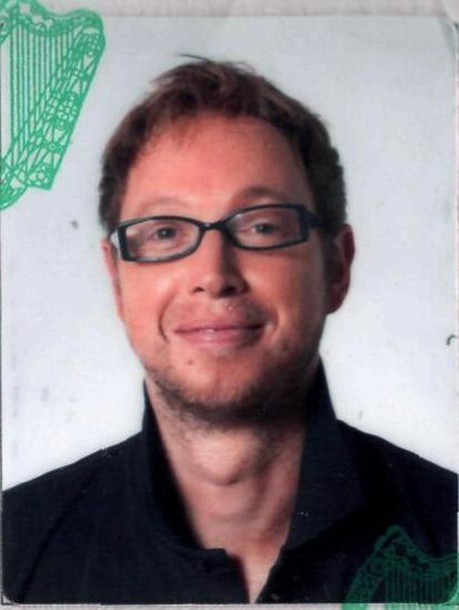


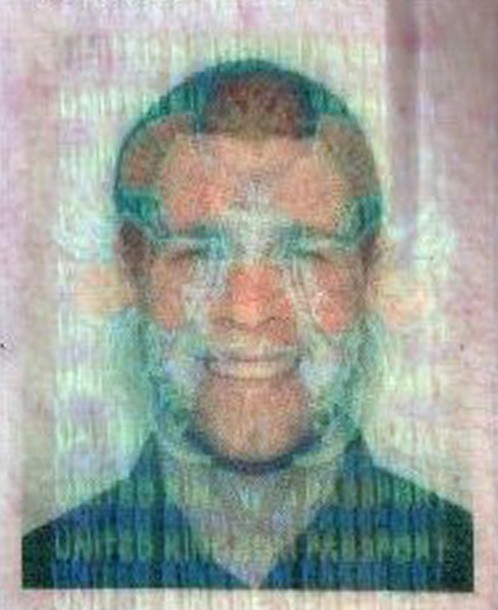
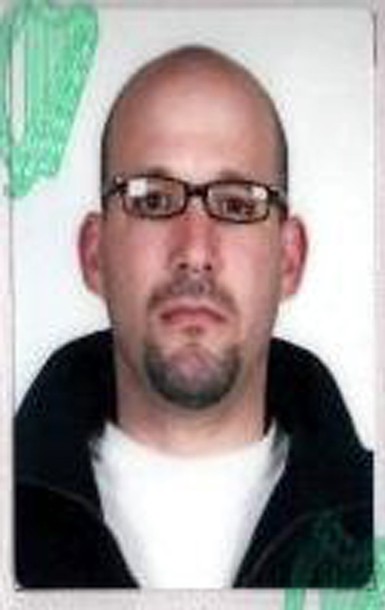

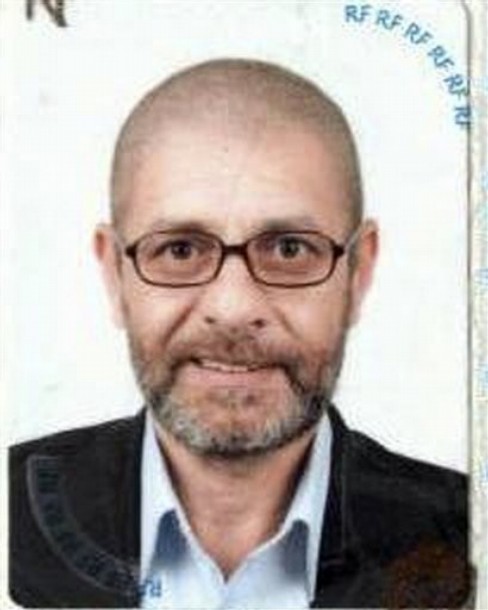





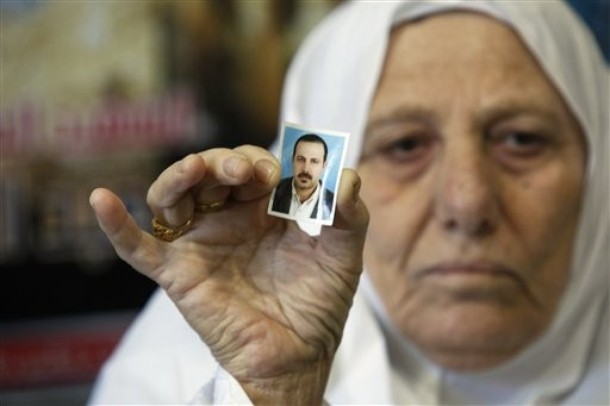
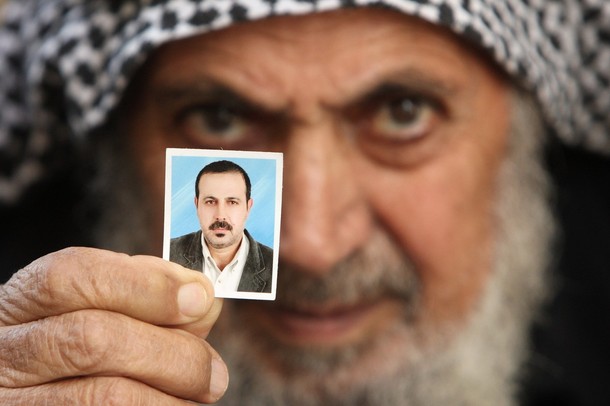
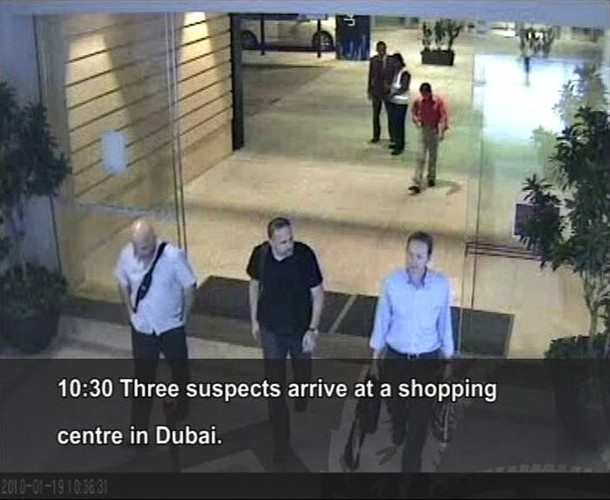
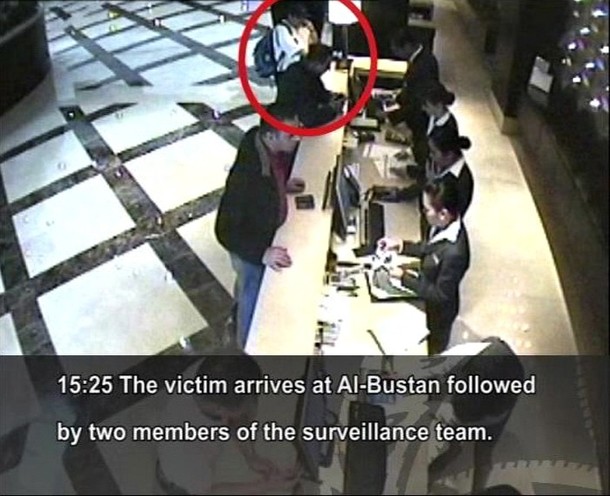
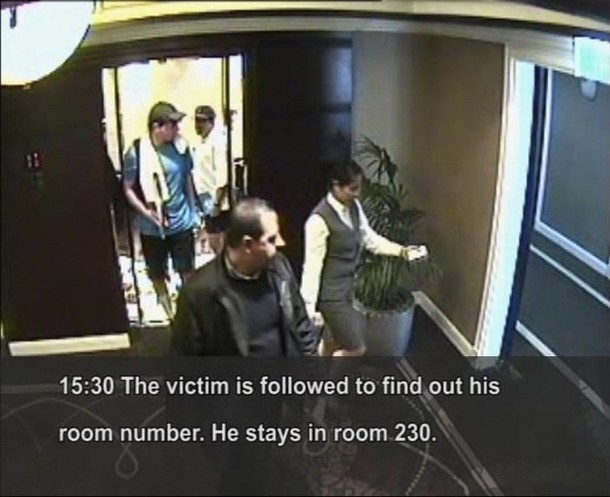
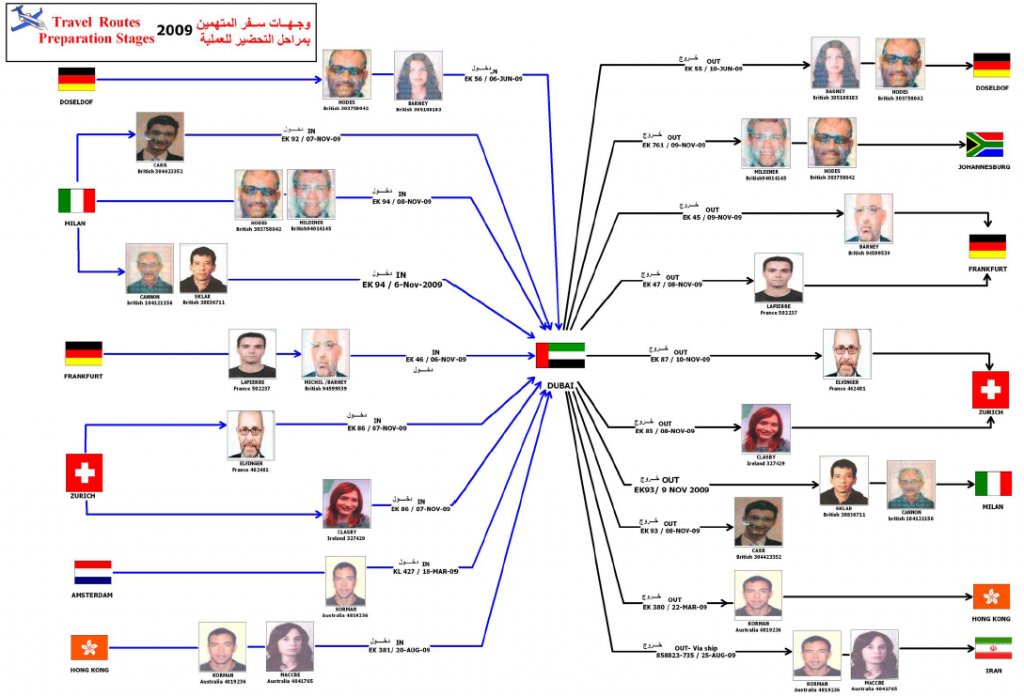
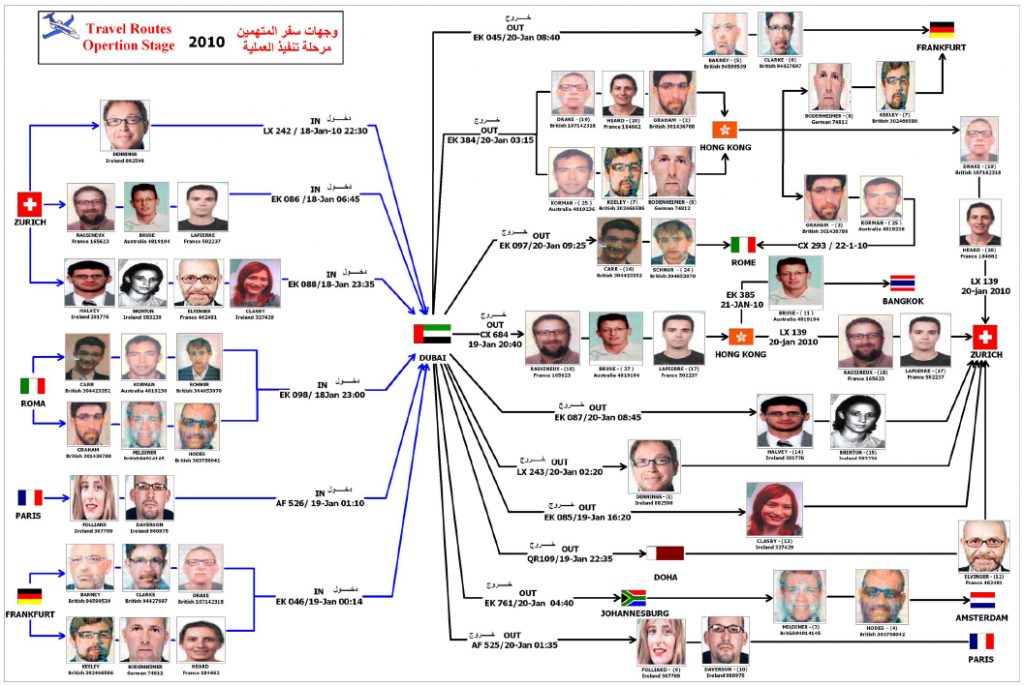



You must be logged in to post a comment.